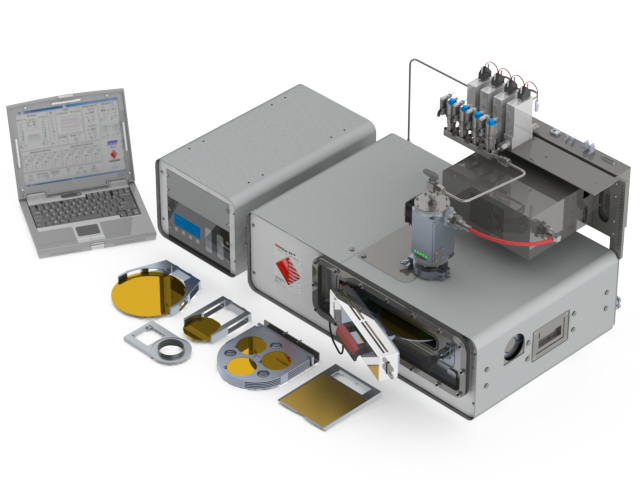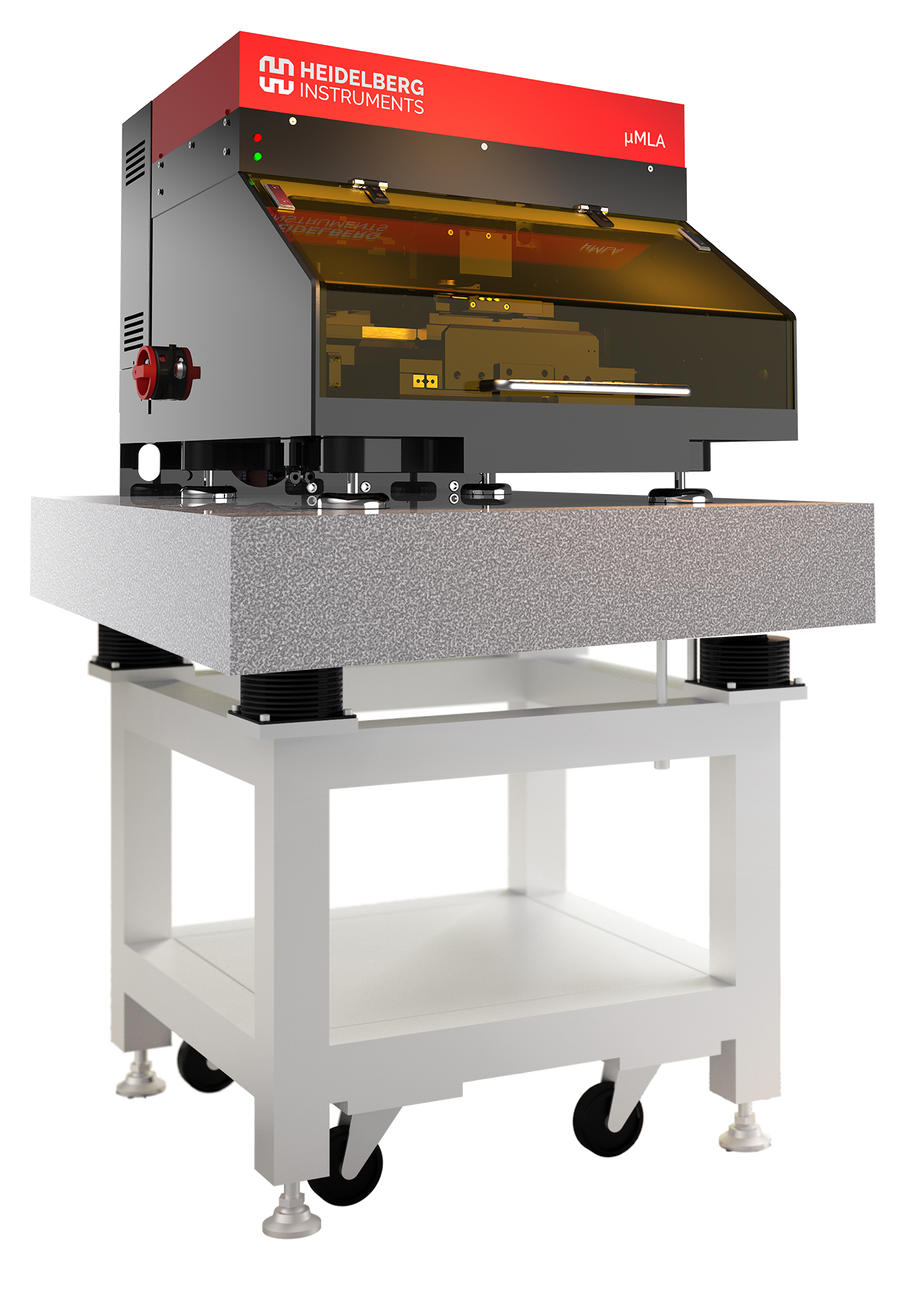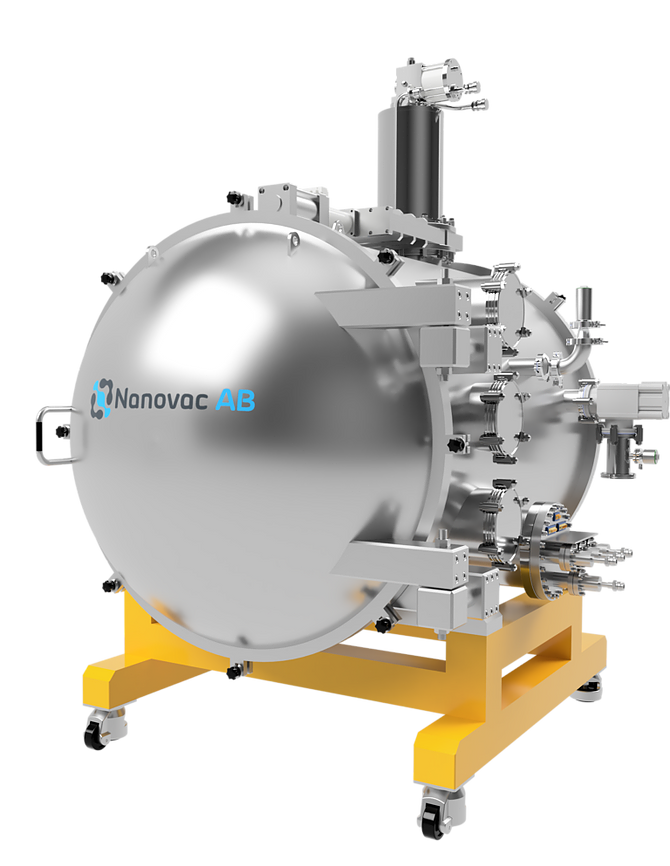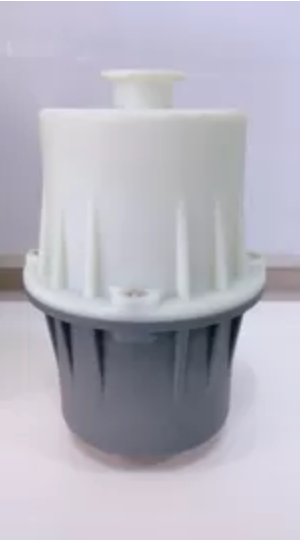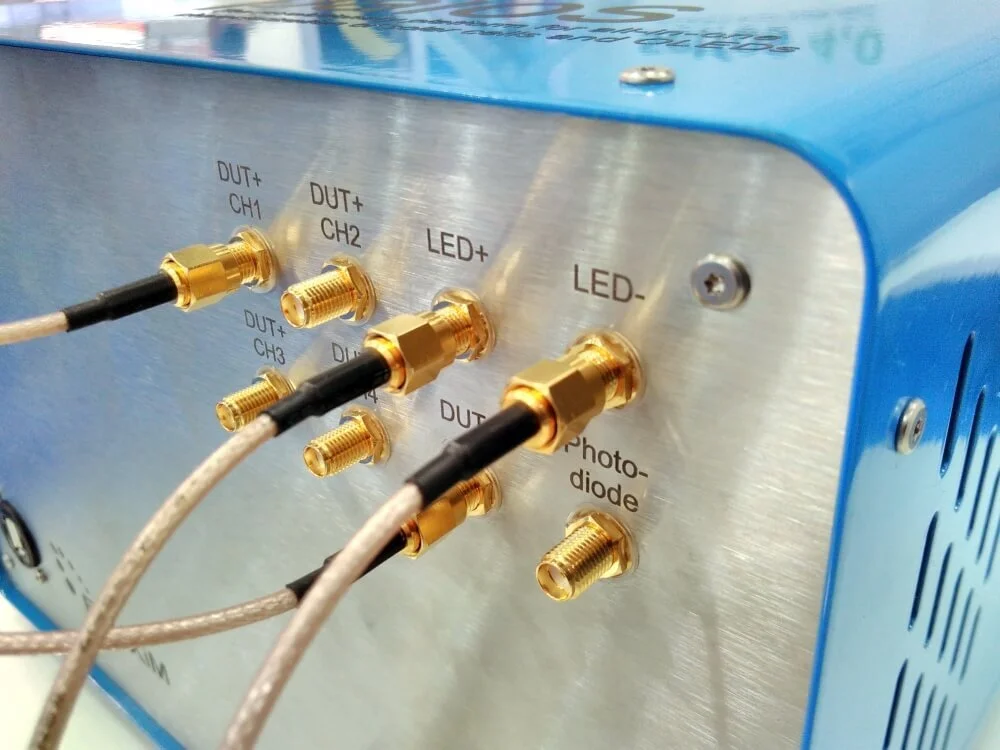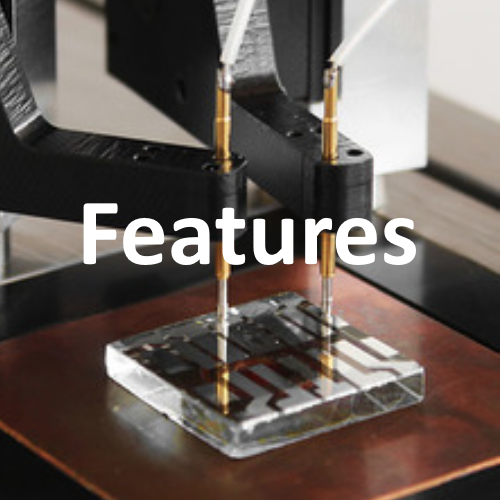PAIOS
Electrical and Optical Characterization of LEDs and Solar Cells
Measurements - OLED/PV Version - Applications - Brochure
Overview
Paios performs a large variety of electrical and optical characterizations on organic, perovskite, and quantum-dot LEDs and solar cells with one click. Get consistent and precise measurement data, directly compare your results in the measurement software and speed up your R&D.
-
Connect your device, launch the routine and every measurement is performed automatically.
-
Reliable and low-noise signals. High reproducibility.
-
Compare all your analysis in the Characterization Suite Software. Fit the data with the integrated fitting routines and prepare your results for final publication.
-
Build a reproducible and reliable device database and store it in the Paios managing software.
-
Think about physics. Paios can handle the rest.
DC, AC and Transient Characterization of OLEDs and Solar Cells
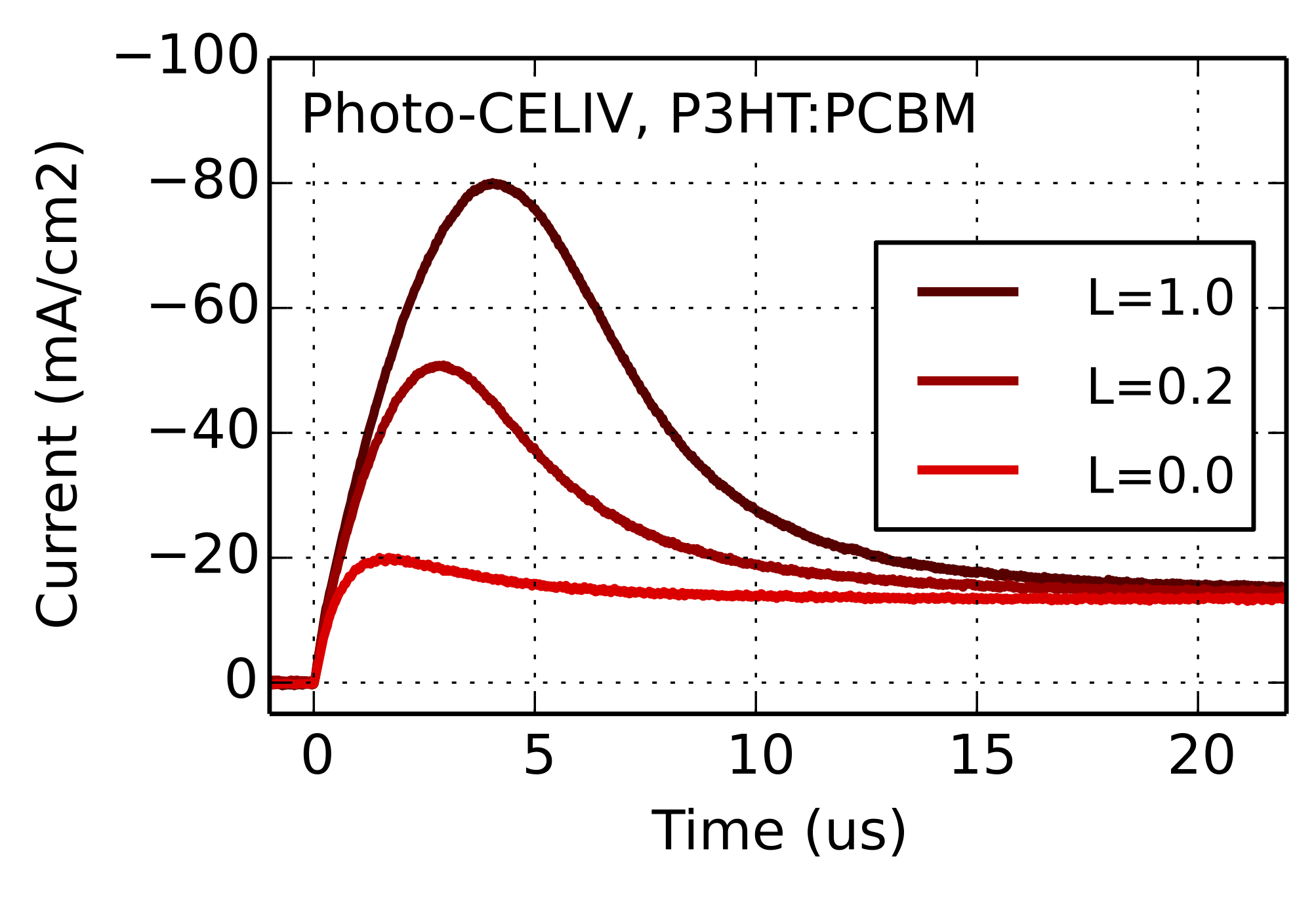
Photo-CELIV is a powerful technique to extract charge carrier mobility, recombination, and doping density.
Now OTRACE is included in Paios.
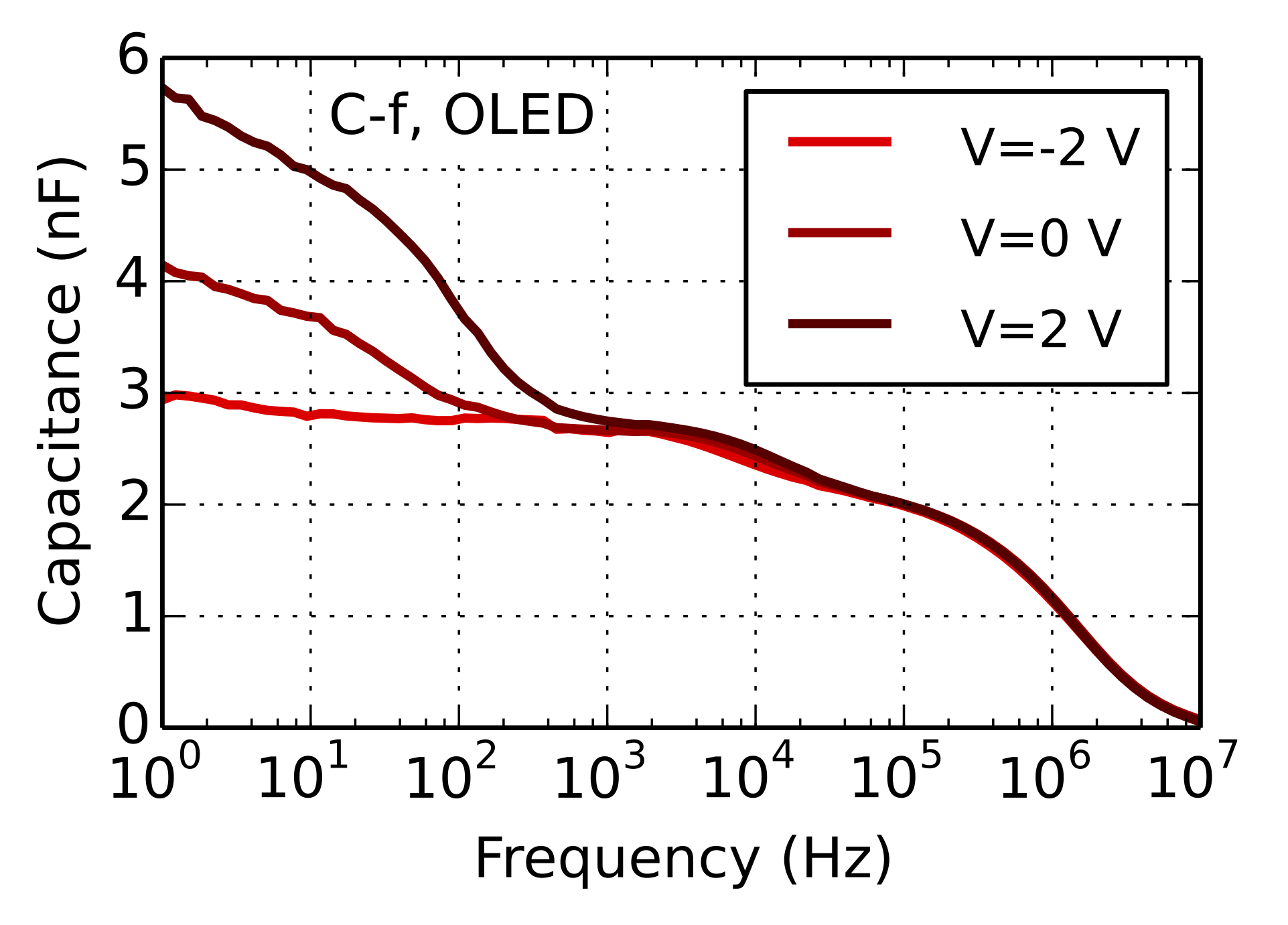
Impedance Spectroscopy is used to study charge carrier dynamics and charge trapping over a large range of time scales.

Capacitance-Voltage reveals information about the built-in field and charge injection barriers. Doping density is extracted with Mott-Schottky analysis.
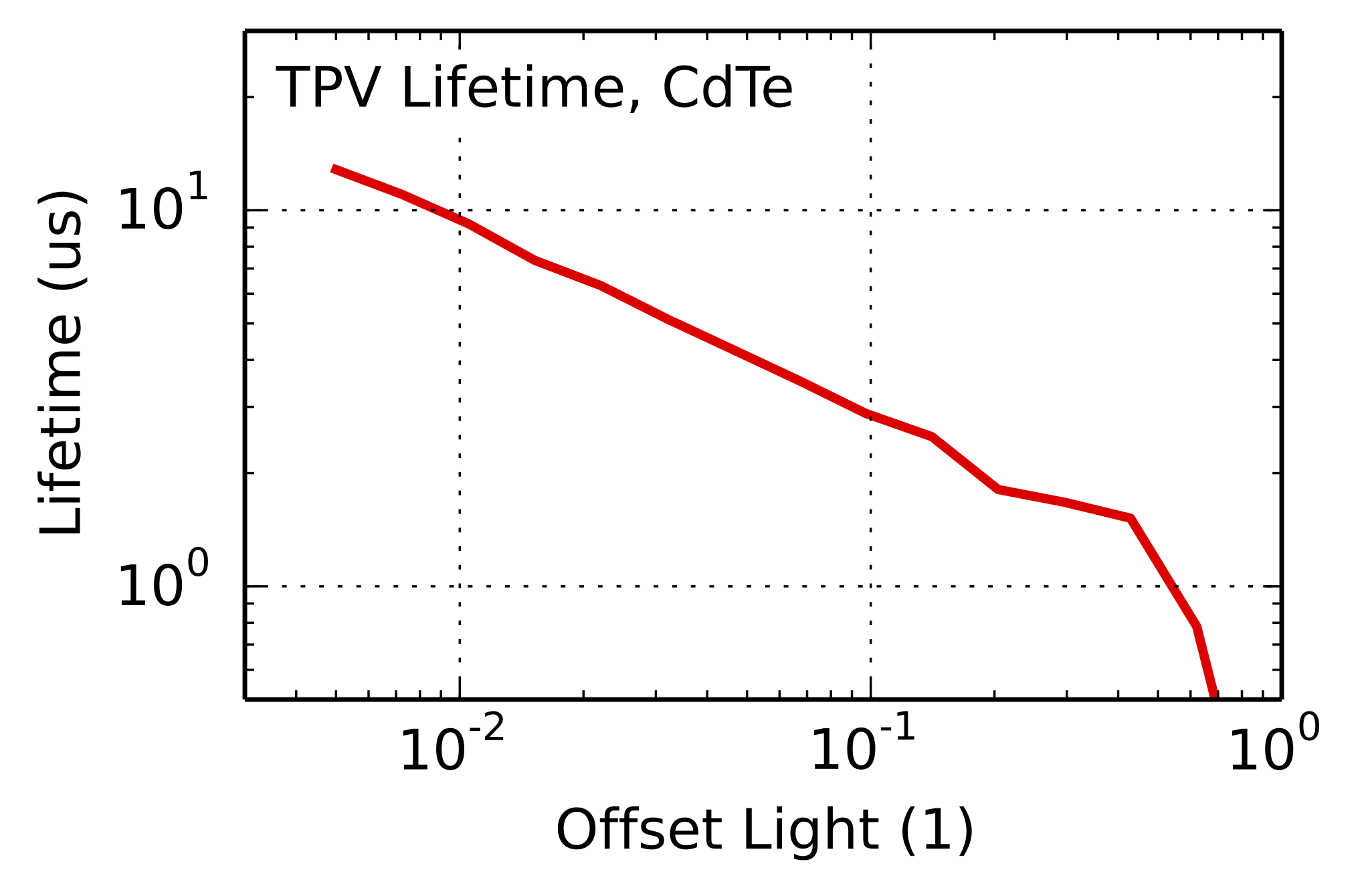
Transient Photovoltage (TPV) is frequently used to determine charge carrier lifetime in solar cells.

Dark Injection Transient (DIT) is used to study transport in mono-polar devices.

Intensity Modulated Photocurrent Spectroscopy (IMPS) probes charge transport by a sinusoidal light intensity variation at short-circuit.
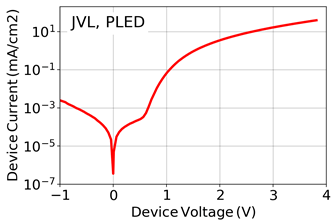
Current-Voltage-Luminance for solar cells Paios automatically calculates the light ideality factor from the slope of the open-circuit voltage versus the light intensity.
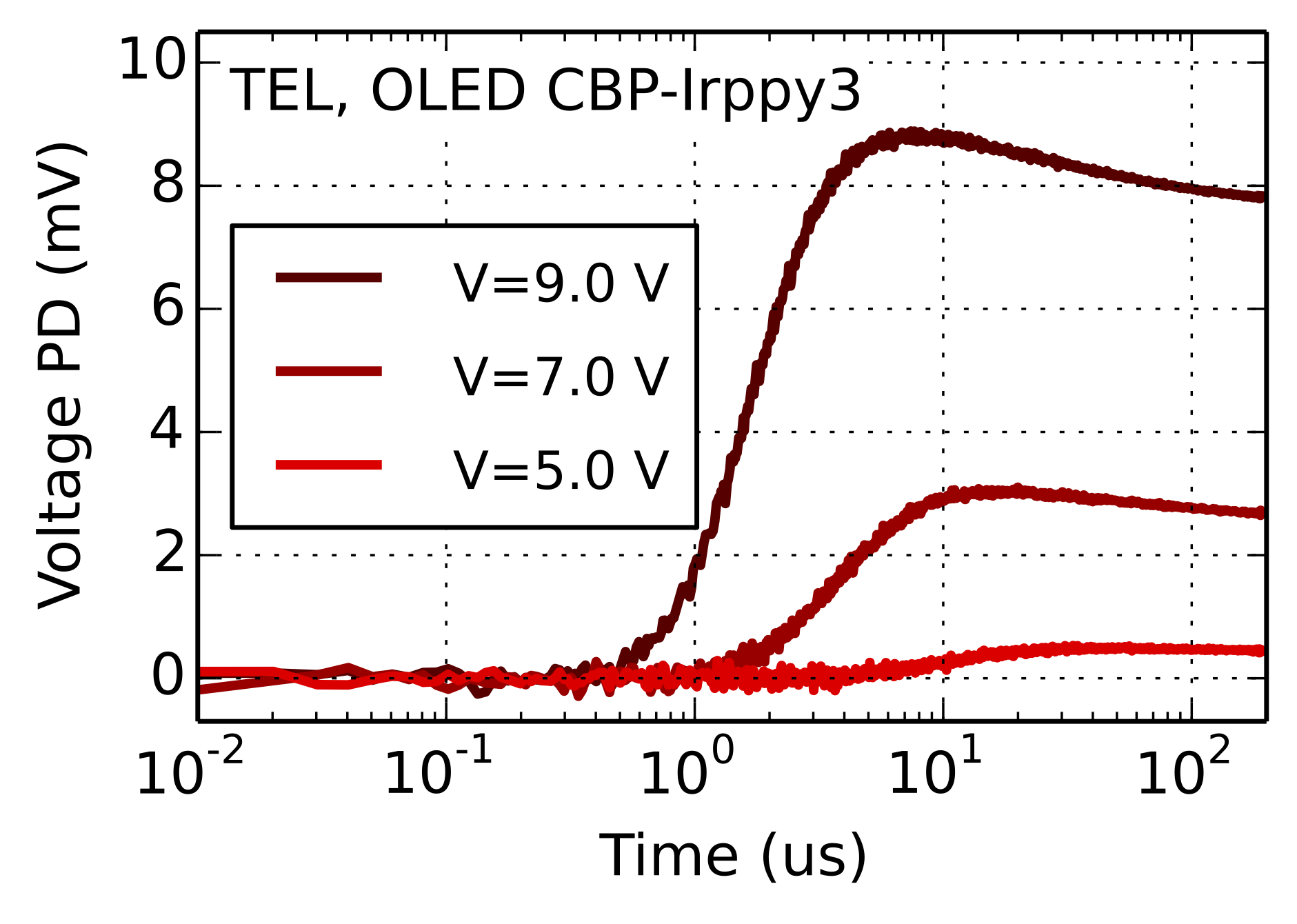
Transient Electroluminescence (TEL) allows extracting mobilities and the phosphorescence lifetime in an OLED.
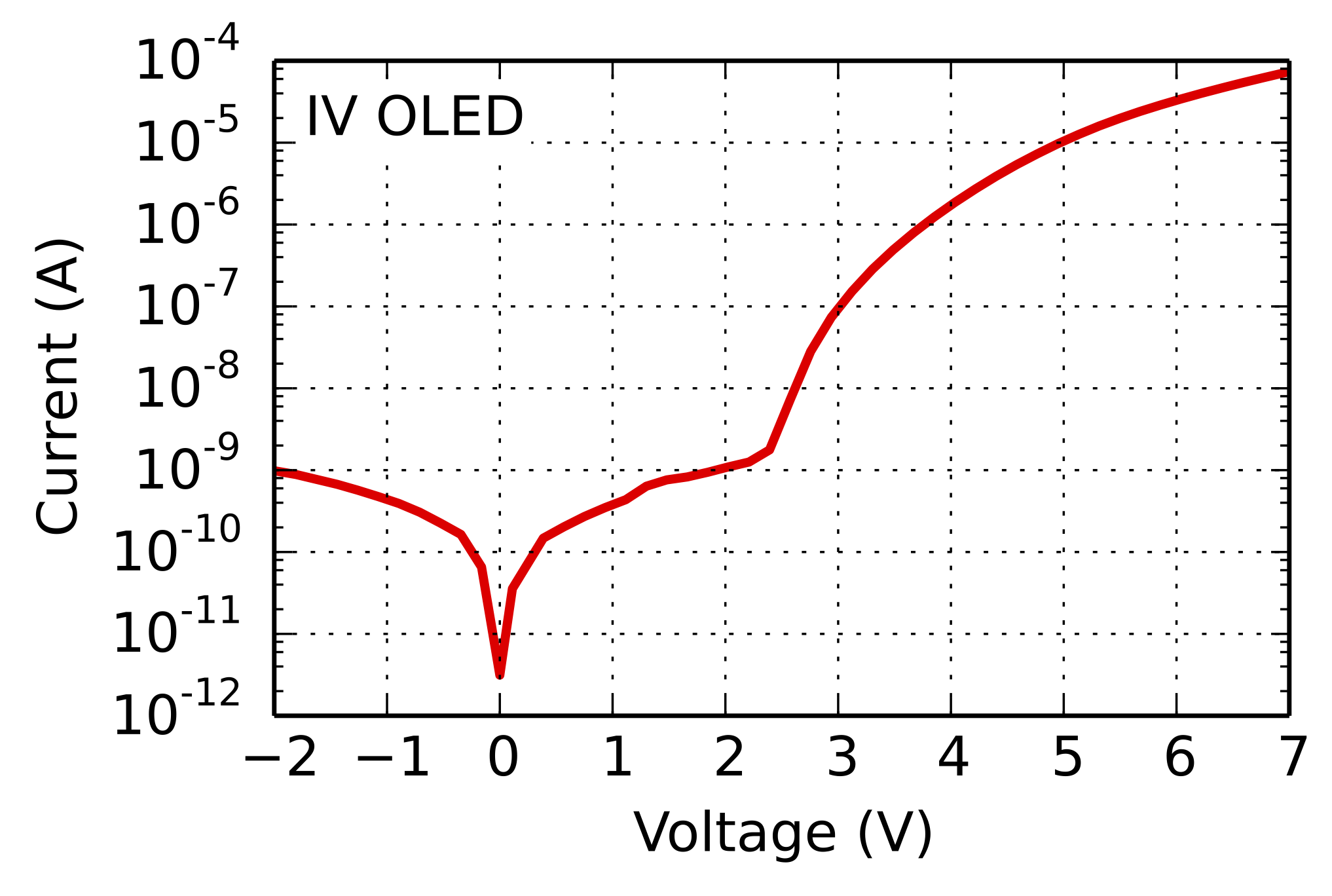
IV & IVL are the standard characterization techniques for solar cells and OLEDs.

Intensity Modulated Photovoltage Spectroscopy (IMVS) probes charge recombination by a sinusoidal light intensity variation at open-circuit.

Emission Spectrum can be measured under constant voltage/current condition in DC, pulsed and pulse-width modulation modes.
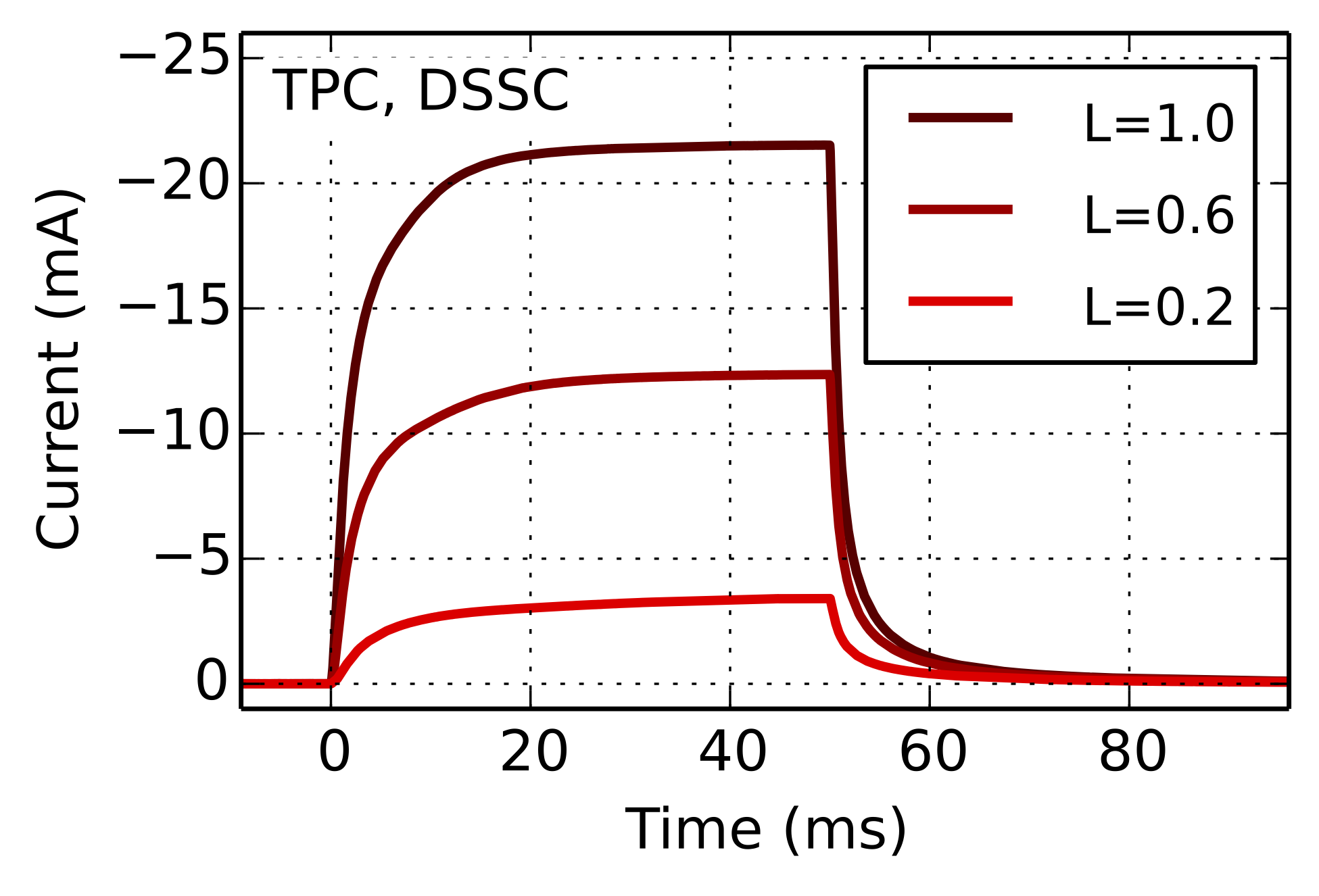
Transient Photocurrent (TPC) provides information on the charge carrier dynamics and charge trapping.
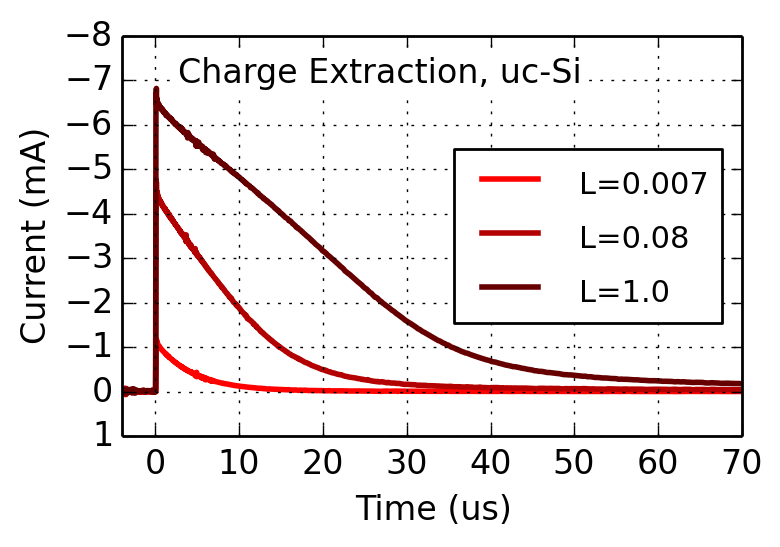
Charge Extraction estimates the charge carrier density of a solar cell at open-circuit voltage.
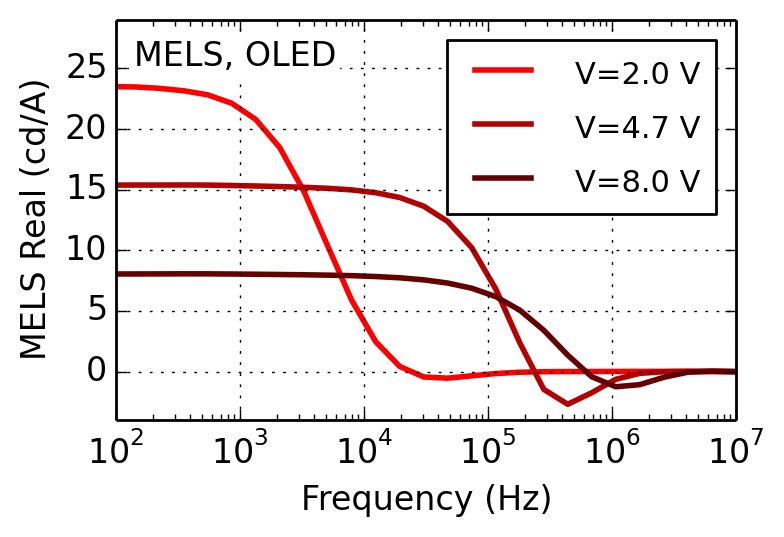
Modulated Electroluminescence Spectroscopy (MELS) probes charge transport in OLEDs at different frequencies
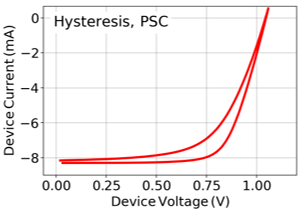
User Defined Signals The custom signal editor allows you to generate an arbitrary transient voltage and illumination signal and to measure the resulting device current.
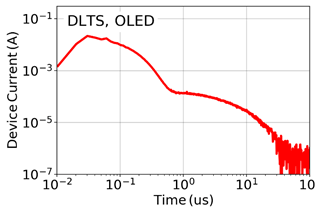
Deep-level transient spectroscopy (DLTS) is a measurement to characterize traps inside a diode. In Paios the current-DLTS method is implemented, where the filling and release of traps as a response to a reverse voltage pulse is recorded. Exponential current decay is a signature of a single trap level, and the temperature-dependent decay time can be used to determine the trap energy.
• for solar cells, MIS, and LEDs
OLED and PV Characterization
Paios is suitable for the characterization of both solar cells and OLEDs.
The versatile Combined Version is suitable for research and development on both LEDs and photovoltaic devices.
-
SOLAR CELLS: the main hardware is equipped with a suitable white LED illumination system. A multi-LED board can be employed for measurements at selected wavelengths. For fast transient measurements, a nanosecond pulser module is also available.
-
OLEDs: an amplified photodetector with an auto gain is included in the version for OLED research. A fiber-coupled spectrometer for spectral emission characterization of OLEDs is also available.


Research Fields
Paios can be employed to characterize different types of devices based on organic semiconductors, perovskites and quantum-dots:
-
Perovskite solar cells
-
Organic, quantum dot, and hybrid solar cells
-
CIGS, CdTe, CZTS solar cells
-
Dye-sensitized solar cells
-
Solid-state thin-film batteries
-
Organic light-emitting diodes (OLEDs)
-
Perovskite-LEDs and QD-LEDs
-
Light-emitting electrochemical cells(LECs)
-
Monopolar devices
-
Metal-Insulator Semiconductor (MIS) devices

More information on how to characterize and simulate your organic and perovskite LED or solar cell can be found in these tutorials:


